Animal tracking has long been at the heart of wildlife conservation strategies in Africa. With more and more species at the edge of extinction, technological innovation that embraces the Internet of Things (IoT) and satellite communications (SATCOM) means that today’s wildlife monitoring systems are more advanced than ever before possible.
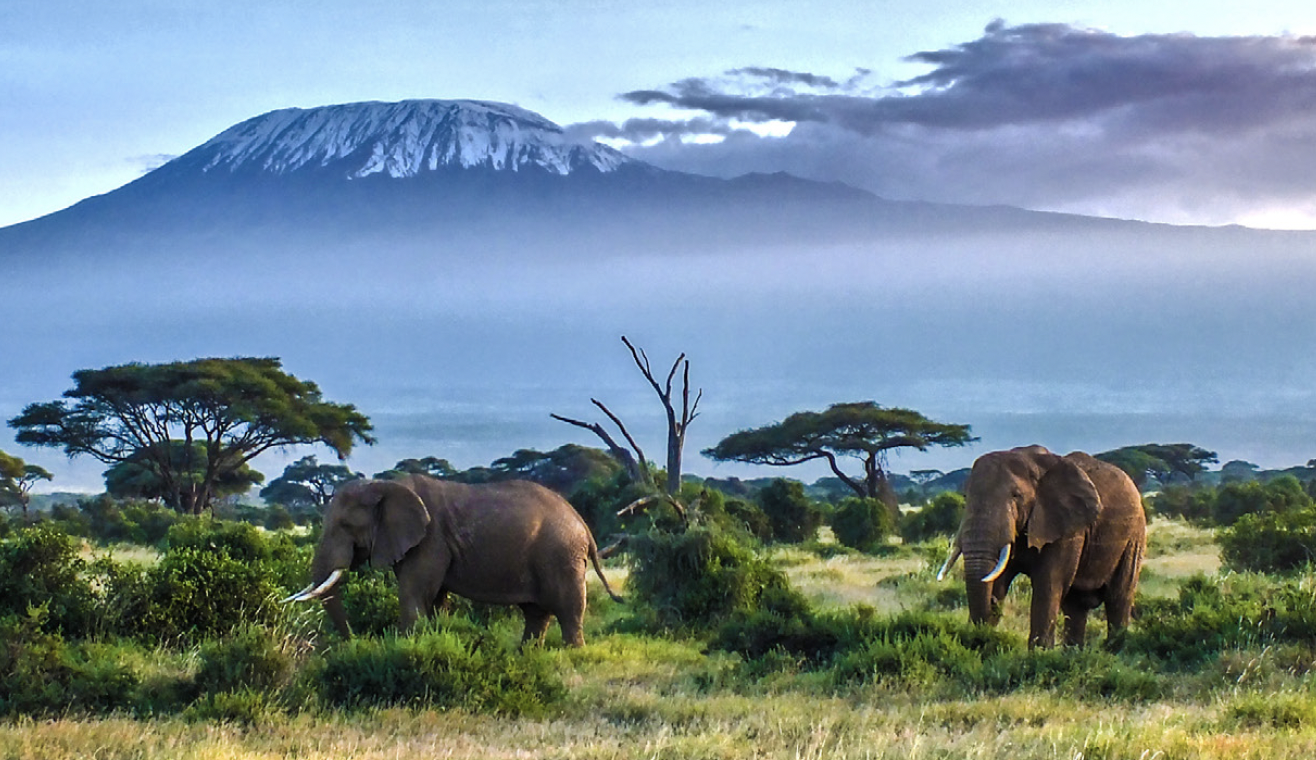
Employing tracking technology has long been one of the most important ways to help the understanding and preserve endangered species. Thanks to animal trackers, researchers and conservationists have a far better understanding of the migration patterns of animals all over the world.
They can also gain granular knowledge of the regions where species have been rendered almost extinct due to human encroachment — in particular, illegal poaching continues to be widespread.
Conservationists are doubling down on their efforts to reduce and ideally eliminate poaching wherever possible.
IoT + Satellites Enable Ubiquitous, Reliable Tracking
Leading edge solutions built around IoT technology and SATCOM are increasingly helping conservationists. In Africa for example, these technologies help to monitor and protect diverse, near-extinct animals.
Tracking devices have greatly evolved over time. Thanks to worldwide efforts that bring scientists together with conservation agencies, governments and technology providers, the tracking devices now being used around the globe are smaller, far more rugged and versatile, and more economical than previously.
It’s essential that the means by which animals are tracked does not interfere with their behaviour. At the same time, collars and tags fitted with tracking technology need to be robust enough to withstand all weather conditions, and the rough treatment a device might receive as a big cat, rhino or elephant herd makes their way across remote terrain.
Today, with IoT and advanced satellite technology, scientists and wildlife protection agencies around the world are benefiting from tiny, ultra-light devices that transmit location data reliably and ubiquitously.
Animal tracking has become a key growth area for Globalstar. In addition to rapidly expanding deployments where the company’s technology is helping farmers to manage their livestock, conservation agencies worldwide are employing tracking systems with Globalstar satellite technology at their heart to protect precious, endangered, wildlife.
Helping Protect Rhinos
Globalstar Value Added Reseller, Johannesburg-based Wintec Solutions, is a specialist technology and solutions provider with extensive experience in animal tracking for wildlife conservation. The company’s most recent wildlife animal preservation deployment leverages the many features of GSatSolar™, the latest addition to Globalstar’s IoT satellite tracking solutions portfolio.
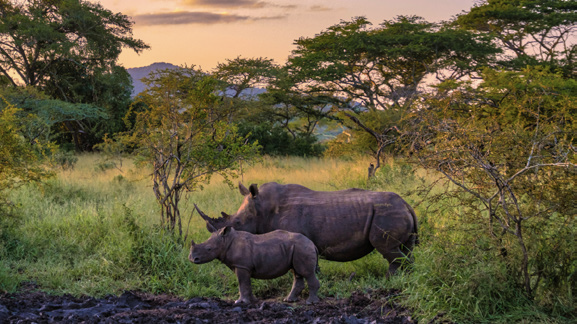
White Rhino in the bush — Blue Canyon Conservancy in South Africa
near Kruger national park — photo by Fokke Baarssen
Rhinoceros are the subject of widespread illegal killing by poachers across Africa. Their horns are used in traditional Chinese medicines, products which today have a huge international market. Objects made from horn are also seen as status symbols among some communities.
Conservationists, including government- backed as well as privately owned wildlife reserves, are engaged in monitoring and safeguarding these animals.
Low-cost and simple to integrate, GSatSolar is a small and rugged satellite IoT tracker that is ideal for wildlife monitoring. Significant advantages of GSatSolar are the unit’s small size and light weight, which means a collar or tag doesn’t irritate the animal.
Also, the product’s robust structure helps ensure it can withstand animals’ day-to-day movements. Furthermore, the low cost makes the solution easily scalable for tracking large herds of wildlife and farm stock.

GSatSolar
“GSatSolar is a game changer, and transforms the possibilities for wildlife conservation and livestock management,” said Rene Winter, Director of Wintec Solutions. “Its tough build and small size mean that it can be deployed on a variety of animals.”
Rhinos are fitted with the device via ear tagging or with a collar. Other novel ways of deploying the devices are also being explored, including painless attachment to the horn.
GSatSolar
Africa’s nature reserves are vast, some as large as 20,000 hectares (77.2 square miles). They are typically located in remote bush regions, as far away from human settlements as practical for the animals’own protection.
An inherent characteristic of these regions is that they have limited or even no coverage by conventional, terrestrial, telecom networks. Satellite technology as the network backbone for tracking systems means the data emanating from the transmitters carried by free-roaming animals is ubiquitous and transmissions uninterrupted, even when beyond GSM mobile networks’ reach.
The technology innovation doesn’t stop there — the user interface of the tracking platform developed by Wintec Solutions includes an informative mapping portal that tracks the animals’ individual and group movements, with useful topographical information.
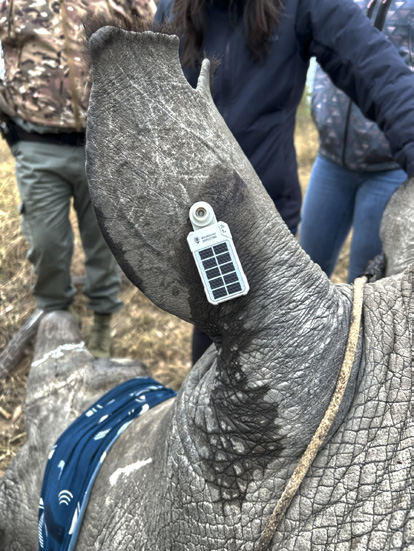
Monitoring the rhino, or other wildlife, helpfully informs as to their behaviours, including grazing habits and field locations that offer the best nutrition. The system also enlightens conservationists about seasonal breeding habits and provides a solid, ongoing picture of the animals’ general health and well-being.
Wintec Solutions is also playing a role in the preservation of other African species. With Wintec’s support, Giraffe Conservation Foundation researchers are successfully monitoring giraffe migration, and keeping safeguarding tabs on animals which have been reintroduced into the wild.
Dr. Courtney Marneweck, Science Data Coordinator at Giraffe Conservation Foundation said, “We’re currently trialling ear tags on giraffe in Namibia. The first units were deployed in June 2023 and, while field trials are ongoing, the data received so far are very promising. We’re looking forward to deploying more units in the future g them in different countries,” she added.
Wintec Solutions is also deploying satellite-enabled animal tags in collaboration with veterinary authorities and research students for a wild buffalo protection program in South Africa’s Kruger National Park. The main goal of this project is to track migration patterns in order to understand and mitigate the spread of bovine tuberculosis.
“Our wildlife preservation activities take place well beyond the reach of GSM mobile; Globalstar’s satellite network, with its ubiquitous reach and reliability, is a fundamental enabler in the operations being carried out to protect endangered species,” said Winter.
Globalstar’s technology is being used elsewhere in Africa to track and monitor elephants and big cats. In another project, the application of tra kers is being tested on pangolins, yet another severely endangered species.
Only SATCOM can provide the always-on connectivity to enable uninterrupted monitoring of these animals.
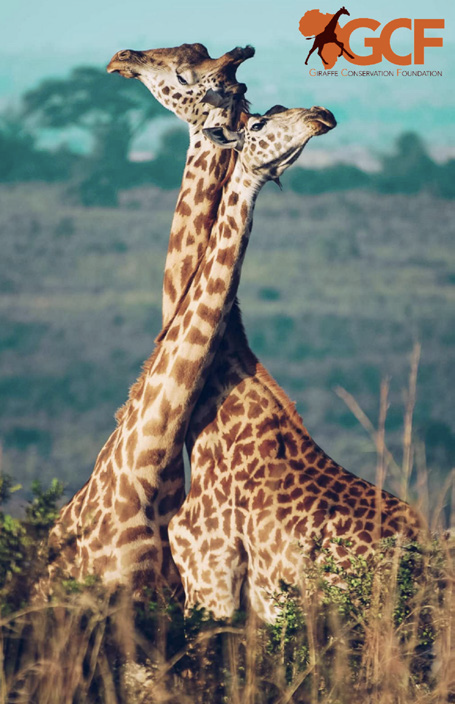
Giraffes image acquire by GCF at the Masai Giraffe
Conservation in Kenya, Africa.
SPOT’s Role In Wildlife Conservation
The story of how satellite technology is helping preserve wildlife goes beyond tracking tags and collars. Security and anti-poaching staff on several African game reserves are using SPOT devices to help improve the efficiency of their safeguarding operations.
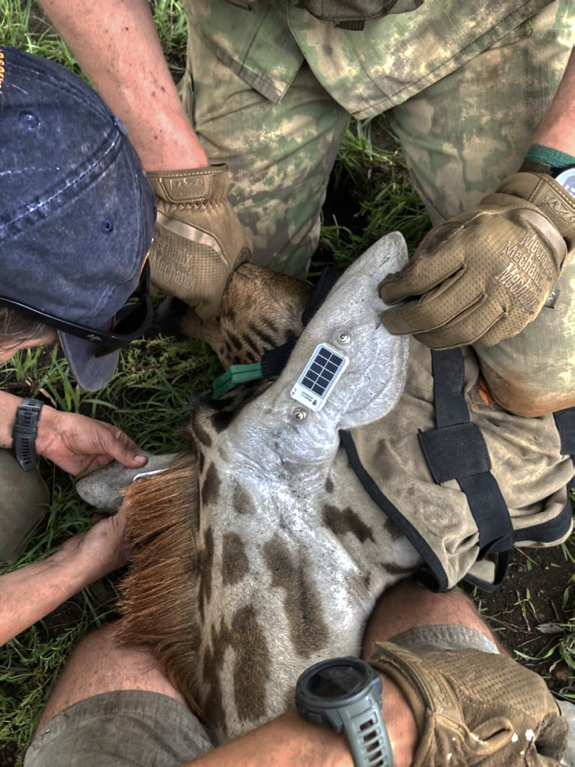
Ear tagging a giraffe with GSatSolar
While rangers often carry a two-way radio for basic communications, if the team needs to rendezvous in the bush, or if a staff member goes missing, searching thick, unmarked terrain can take hours or days without knowing the missing parties’ accurate GPS location.
With one touch of SPOT’s SOS button, GPS co-ordinates are transmitted to rescuers who then immediately know where to deliver help. If the crew is in pursuit of a poacher, fellow members in the anti-poaching unit can keep close watch over their movements via SPOT’s Google Maps interface.
If a crew member on patrol suspects an act of poaching is underway, they can alert the team, who can then track the personnel via SPOT as they carry out their investigations.
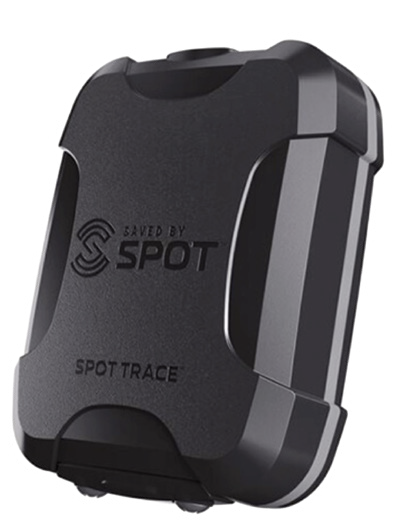
SPOT Trace
In another deployment, SPOT Trace is being used to simultaneously track lions and neighboring livestock. There are no fences in Botswana’s wildlife reserves, whose inhabitants include both animals and people. In these areas, keeping farm cattle safe from wild predators is of the highest priority.
Villagers are using SPOT Trace as an early warning system to alert the local community when lions are getting too close to cattle or the village. This gives farmers a heads up, enabling them to relocate their herds if necessary.
Our natural wildlife is priceless.
It is critical that technology innovators work hand in hand with researchers and conservation agencies to do all that we can to safeguard the world’s critically endangered species.
Globalstar is extremely proud that the company’s technology, in partnership with the highly creative network of value added distributors, is playing such a key role in the preservation of wildlife, safeguarding the people working to protect endangered species as well as the environment in which they work and live.
www.globalstar.com/en-gb/

Gavan Murphy
Author Gavan Murphy is the Director of Marketing EMEA and APAC, Globalstar. He is based in Globalstar’s European HQ in Dublin and is responsible for the development and implementation of Globalstar’s marketing strategy across the EMEA and APAC regions. He spearheads the marketing of Globalstar’s consumer products including the SPOT satellite- enabled safety and tracking solutions portfolio as well as B2B marketing of data solutions for a range of vertical sectors including maritime, agriculture, energy, forestry, safety and security, transportation, logistics, as well as the burgeoning IoT sector. Prior to joining Globalstar in 2008, Gavan worked with Vodafone as Channel Development and Category Manager.


